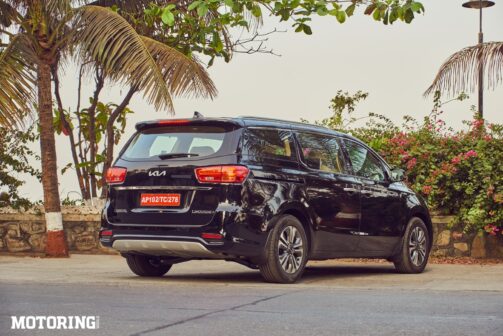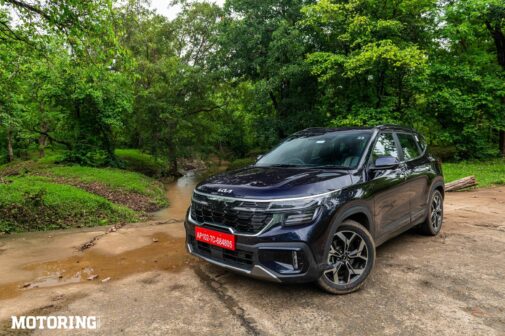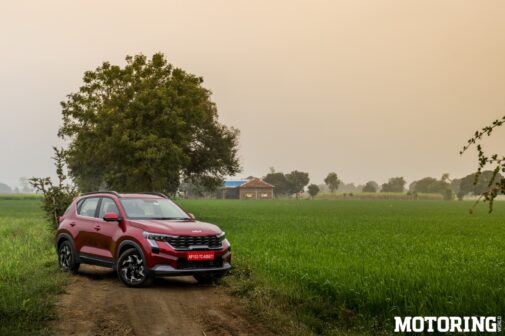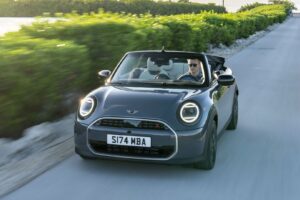Motoring World: As Kia establishes itself in India, how would you describe its positioning in the Indian automotive landscape, and what sets Kia apart from its competitors?
Hardeep Singh Brar: Kia’s resounding success in this short span of time is the result of the distinctiveness we have established for our brand. We did extensive research over the years before our market entry in 2019. Our emphasis on bold design and technology of the car gave us a distinct appeal and set us apart from our competitors. Our commitment to innovation, sustainability, and customer satisfaction, reflects our forward-thinking approach. We launched products with wide range of fuel and transmission options, offering our customer high flexibility as per their budget. Additionally, launch of premium models like Carnival and EV6 further strengthened our premium imagery in the Indian market.
MW: As Kia continues to expand its presence in India, what initiatives is the company taking to enhance its after-sales service and customer support network across the country?
HSB: Recently we have crossed the milestone of 500+ touchpoints across 236 cities. With the largest brand touchpoints among new entrants, we are focused on strengthening the brand’s presence in Tier 1 and 2 markets, contributing 40% to Kia’s total network strength. We are also focused on expanding our touchpoints in the Tier 4 and upcountry markets, which make up 46% of Kia’s network capacity in India.
Kia intends to increase its Certified Pre-owned network to 100 outlets by the end of 2024. Furthermore, we also provide after-sales services through 54 Mobile Workshops for upcountry towns and 110 Service Cars in big cities to cater to the needs of urban customers for doorstep service. The pick & drop facility has been on the uprise and now stands at 33% of total service requests.
As part of Kia’s 2.0 strategy, we are aiming to close the year with over 700 touchpoints, thereby making Kia more accessible to our esteemed customers.
MW: With the increasing demand for connected features in vehicles, how is Kia incorporating advanced technology and connectivity solutions into its cars for the Indian market?
HSB: Kia India, renowned for enabling new tech-driven mobility experiences, has driven past yet another milestone by recording sales of over 400,000 connected cars. The Connected Car variants contribute more than 44% to Kia India’s overall domestic dispatches, representing one of the best industry case studies. Kia Seltos connected car sales are about 65% of the overall sales which is another industry benchmark.
We have differentiated our brand in the market for its design and technological superiority. In today’s hyper-connected world, customers want their cars to be seamlessly integrated with their lifestyle, driving a surge in demand for technology-enabled cars. We will continue to introduce more and more connected car features to offer a safer, more connected, and enjoyable driving experience to our new-age customers.
MW: What factors do you attribute to the remarkable success of the Kia Seltos in the Indian market since its launch in 2019?
HSB: Kia Seltos has been a disruptor in the Mid-SUV segment since its launch in 2019, the biggest reason behind its success. The SUV’s design and styling, features & variant innovations, pricing, and positioning have always been distinct from its competition. We spent a lot of time understanding the market and consumers’ needs and wants. We first launched Seltos with 19 variants, offering the best possible engine, transmission, and feature combinations at every price point. Additionally, Seltos’ unique positioning in the market helped us to associate with buyers’ emotions, which eventually influenced their buying decisions. Timely updates and low maintenance costs also helped us spread positive word of mouth for the SUV and win customers’ hearts. Today, Seltos has become a case study in the Indian Automotive Market for successful market entry, with over 6 Lakh units dispatched to domestic and export markets. Furthermore, every 10th Kia car sold globally is a Seltos, showcasing Kia’s globality as a brand.
MW: How did Kia adapt its marketing and branding strategies to resonate with Indian consumers and carve out a significant market share in a competitive automotive landscape for Seltos?
HSB: Our success in the Indian market, particularly with Seltos, can be attributed to strategic branding approach and targeted marketing efforts tailored to resonate with new-age consumers. Even before launching the first product, we tried to establish the brand in India. Quirky communication and 360-degree brand campaigns focused specially on design did the trick for us.
Before entering the market, we recognized the importance of targeting the 25-45 age group, representing the primary car-buying demographic in India. Instead of focusing solely on features and performance, we created a unique voice and identity through our marketing campaigns. By leveraging social media and moment marketing, we successfully generated buzz and engagement among our target audience.
MW: How has the design philosophy of the Kia Seltos contributed to its appeal among Indian consumers, and how does it align with the preferences and trends in the Indian automotive market?
HSB: The design philosophy of the Kia Seltos aligns with the preferences and trends in the Indian automotive market by offering a combination of modern styling, premium aesthetics, spacious interiors, advanced technology, and customization options. This holistic approach has contributed to the vehicle’s appeal and success in the competitive Indian SUV segment. Our ‘Opposites United’ design philosophy is also reflected in the New Seltos and remains ever-more appealing to Indian customers with its distinct and futuristic look. With this philosophy, we bring together opposites to create something unique. We deploy the concepts of disruption and contrast to create characterful designs.
MW: In what ways has Kia India addressed challenges such as supply chain disruptions, changing consumer preferences, and regulatory changes to maintain the momentum of the Kia Seltos in the Indian market?
HSB: We are consolidating our market leadership consistently in the mid-SUV segment with the new Seltos. Taking note of the changing customer preferences, we launched the new Seltos last year. The premier SUV option is leading the growth of the mid-SUV segment by reinventing and revamping it with its best-in-segment features, such as Dual Screen Panoramic Display and Touchscreen Navigation and stunning design. The much-awaited Dual Pane Panoramic Sunroof and Electric Parking Brake in the new Seltos further make it a compelling value proposition. Catering to the evolving customer needs, the new Seltos offers segment-leading 67+ Smart features to keep customers remotely connected with the SUV.
To bring down the waiting periods, we even introduced new variants: GTX+ (S) and X-Line (S). The average waiting period on the new Seltos lineup was about 15-16 weeks and with the new variants, we cut down the waiting period to 7-9 weeks. These variants were carefully designed for the tech-savvy customers who want the looks, the tech, ADAS-assisted safety systems and quicker deliveries.
MW: Looking ahead, what innovations and strategies does Kia India plan to implement to sustain the success of the Kia Seltos and further strengthen Kia’s position in the Indian automotive industry?
HSB: We have a long-term focus on the Indian market, which is a very high-potential market. We plan to introduce regular product interventions – new models (2EV models and one ICE model) and product enhancements (At least 3) by 2025. We will share more details when the time is right.
Apart from this, from time to time, we will introduce new variants in Seltos, Sonet and Carens, depending on the market demand, offering more value to our customers.





















